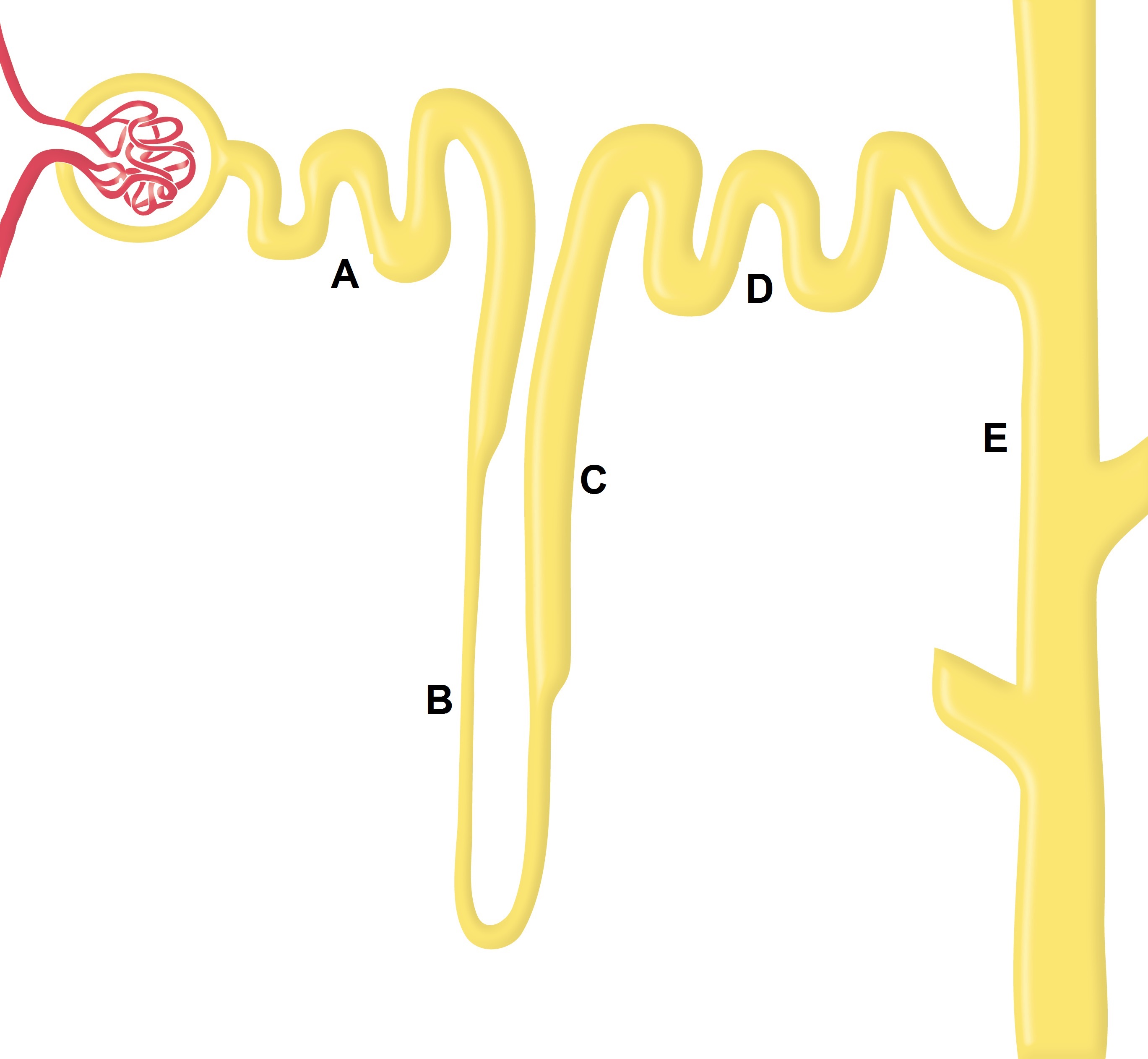WBR0420
Jump to navigation
Jump to search
| Author | [[PageAuthor::Yazan Daaboul, M.D. (Reviewed by Yazan Daaboul, M.D.)]] |
|---|---|
| Exam Type | ExamType::USMLE Step 1 |
| Main Category | MainCategory::Physiology |
| Sub Category | SubCategory::Renal |
| Prompt | [[Prompt::A researcher is studying the fate of bile salts following release into the gastrointestinal tract. At the level of the kidney, the researcher notes that after filtration, the amount of bile salts within one of the nephron segments increases rapidly. Based on the image shown below, which of the following nephron segments is responsible for the secretion of bile salts? |
| Answer A | AnswerA::A |
| Answer A Explanation | [[AnswerAExp::The proximal convoluted tubule is the most important nephron segment responsible for secretion of organic acids and bases.]] |
| Answer B | AnswerB::B |
| Answer B Explanation | [[AnswerBExp::The thin descending loop of Henle is not the major site of bile salt secretion. The thin descending loop of Henle has thin epithelial membranes that lack brush borders. Because it is a segment with minimal metabolic activity, few mitochondria are located in this site.]] |
| Answer C | AnswerC::C |
| Answer C Explanation | [[AnswerCExp::The thick ascending loop of Henle is not the major site of bile salt secretion. It has thick epithelial cells with high metabolic activity. Reabsorption of major ions, such as sodium, potassium, and chloride, occurs at the level of the thick ascending loop of Henle.]] |
| Answer D | AnswerD::D |
| Answer D Explanation | [[AnswerDExp::The distal tubule is not the major site of bile salt secretion. The first part of the distal tubule forms the macula densa, a part of the juxtaglomerular complex. The convoluted part of the distal tubules has reabsorptive capacity similar to that of the thick ascending loop of Henle. The distal part of the distal tubules has similar functional characteristics as that of the cortical collecting tubule.]] |
| Answer E | AnswerE::E |
| Answer E Explanation | [[AnswerEExp::The collecting duct is not the major site of bile salt secretion. Collecting tubules contain principal cells and intercalated cells.]] |
| Right Answer | RightAnswer::A |
| Explanation | [[Explanation::The proximal convoluted tubule is the most important nephron segment responsible for secretion of organic acids and bases. Accordingly, bile salts, oxalate, urate, and catecholamines are all mainly secreted in the proximal convoluted tubule. Both filtration and secretion of these compounds play an important role in their renal excretion. Educational Objective: The proximal convoluted tubule is the most important nephron segment responsible for secretion of organic acids and bases. |
| Approved | Approved::Yes |
| Keyword | WBRKeyword::Loop of Henle, WBRKeyword::Bile salt, WBRKeyword::Nephron, WBRKeyword::Secretion, WBRKeyword::Bile acid, WBRKeyword::Proximal convoluted tubule |
| Linked Question | Linked:: |
| Order in Linked Questions | LinkedOrder:: |
